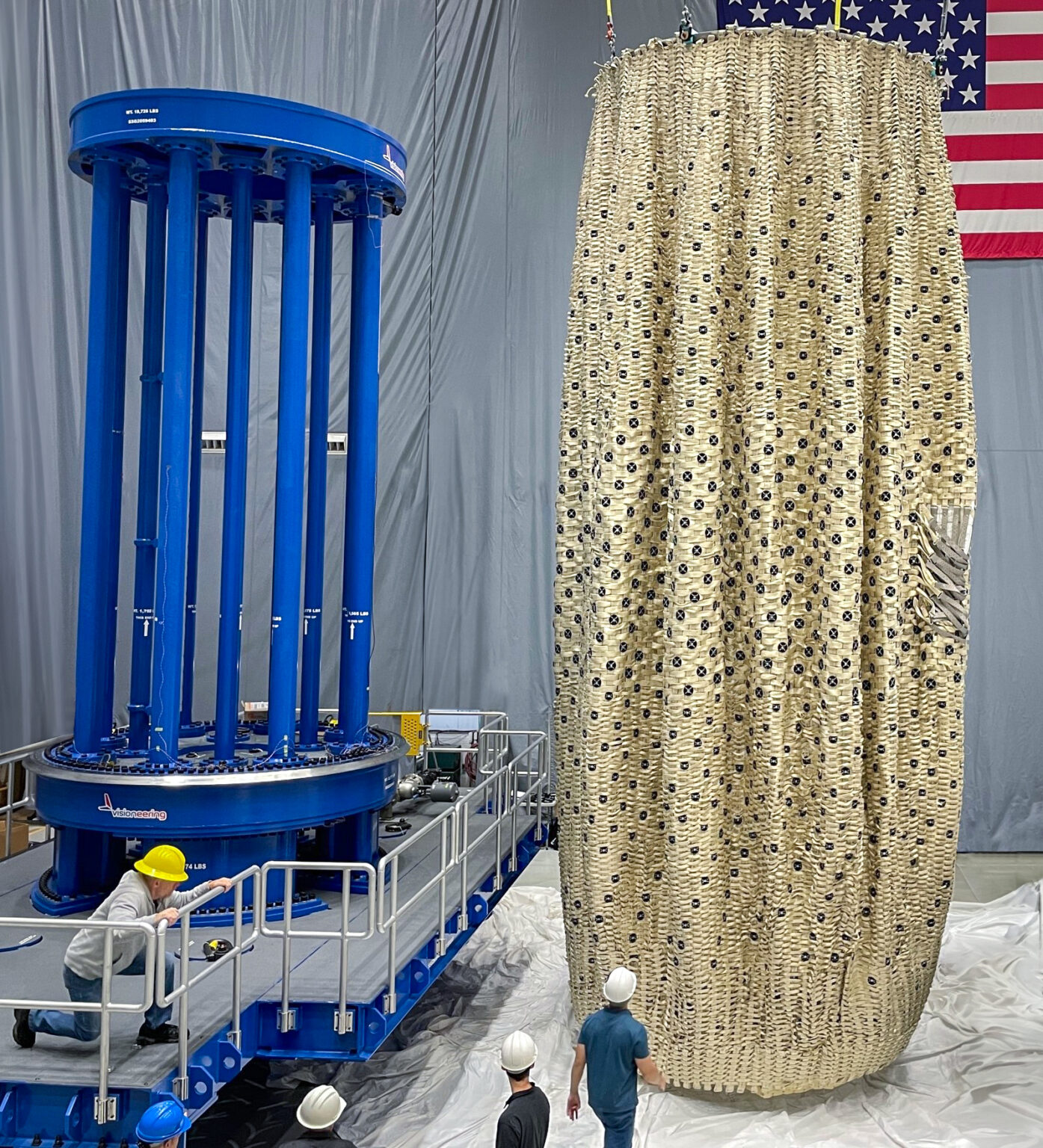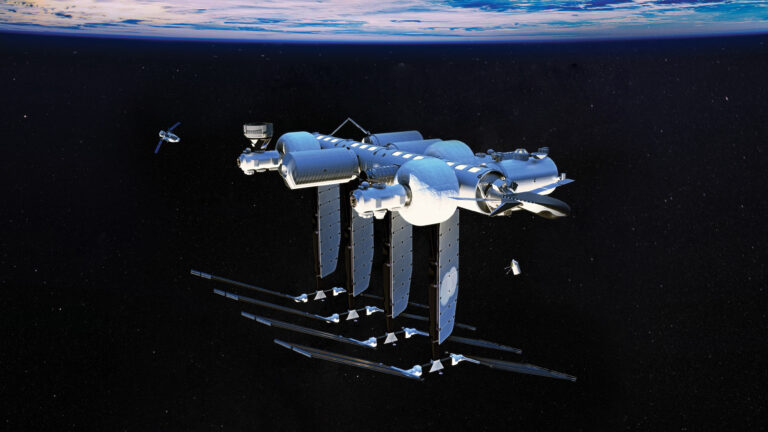Sierra Space has announced that it is preparing the largest burst test in history. It will involve a full-scale prototype of an inflatable module designed for the Orbital Reef orbital station.

The Orbital Reef project was announced by Blue Origin and Sierra Space in 2021. It envisages the creation of a commercial orbital station designed to accommodate up to ten people. It will consist of many modules and, when fully deployed, will be comparable in size to the ISS. It is planned to be leased for various research, technological and commercial missions.
Blue Origin will build individual technical modules and service systems, as well as launch the station’s components into orbit. It is planned to use the New Glenn rocket for this purpose. Sierra Space will design the LIFE inflatable module, which will become the crew’s habitat. It will consist of cross-linked and interwoven flexible fibers (mostly vectran), which will turn into a rigid structure under pressure in orbit. Another part of the company’s contribution will be the reusable Dream Chaser spacecraft. It will be used to deliver cargo and people to the station.

Orbital Reef station (concept). Source: Blue Origin
In preparation for the construction of the station, Sierra Space has already conducted a number of tensile tests of the inflatable module prototypes. Such tests are necessary to collect data on the tensile strength of the structure and improve the technology. But the new test will far surpass them in scale. It will involve the full-size LIFE prototype. Its height is 6.25 meters, diameter is 8.23 meters, and the total volume is 283.17 m³.
The test is currently scheduled for December 2023. It will take place at the Marshall Space Flight Center. Engineers will increase the pressure inside the module until it bursts. The data collected during the test will help in the process of certification of the technology by NASA, which will allow it to be used during future manned missions.
Based on materials from https://www.sierraspace.com
